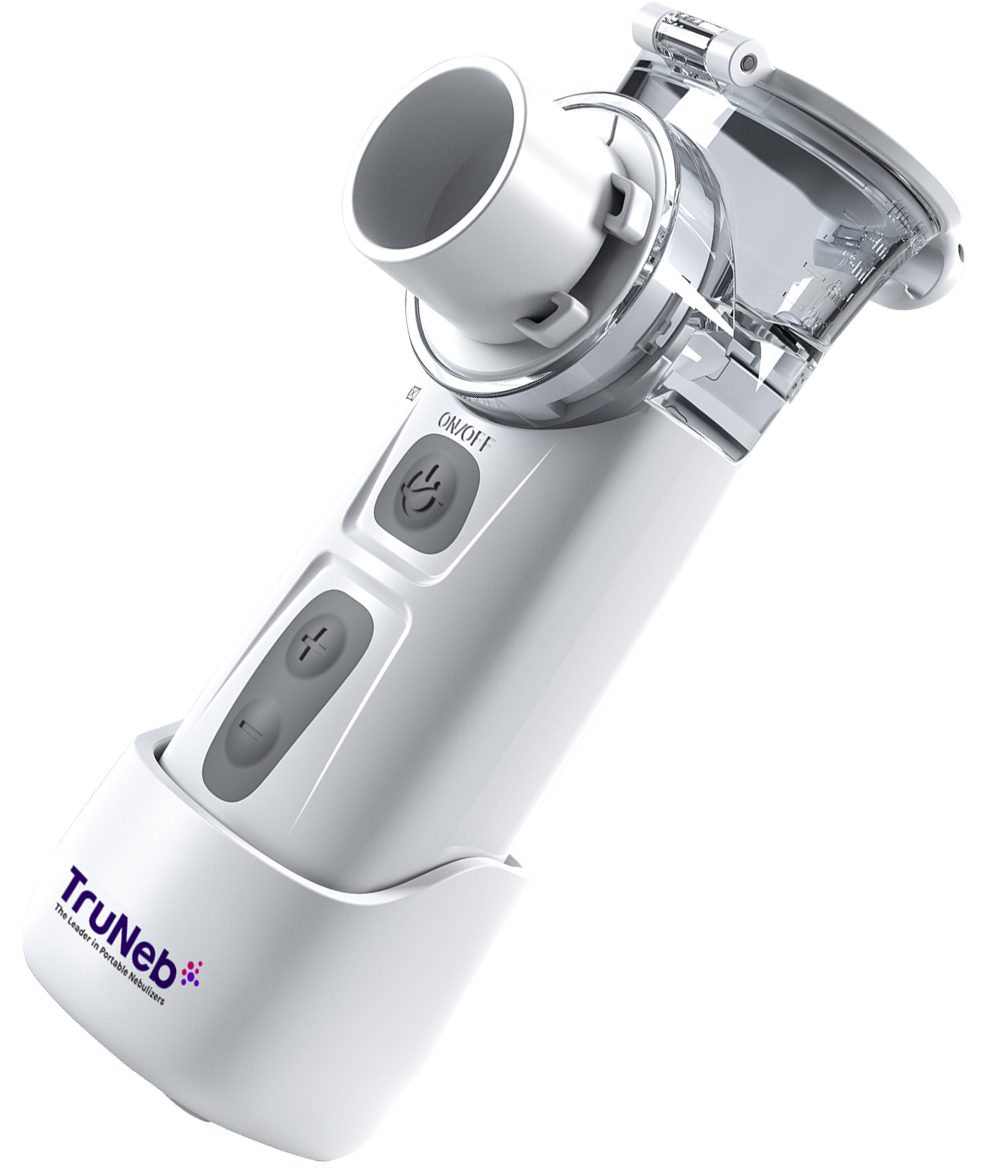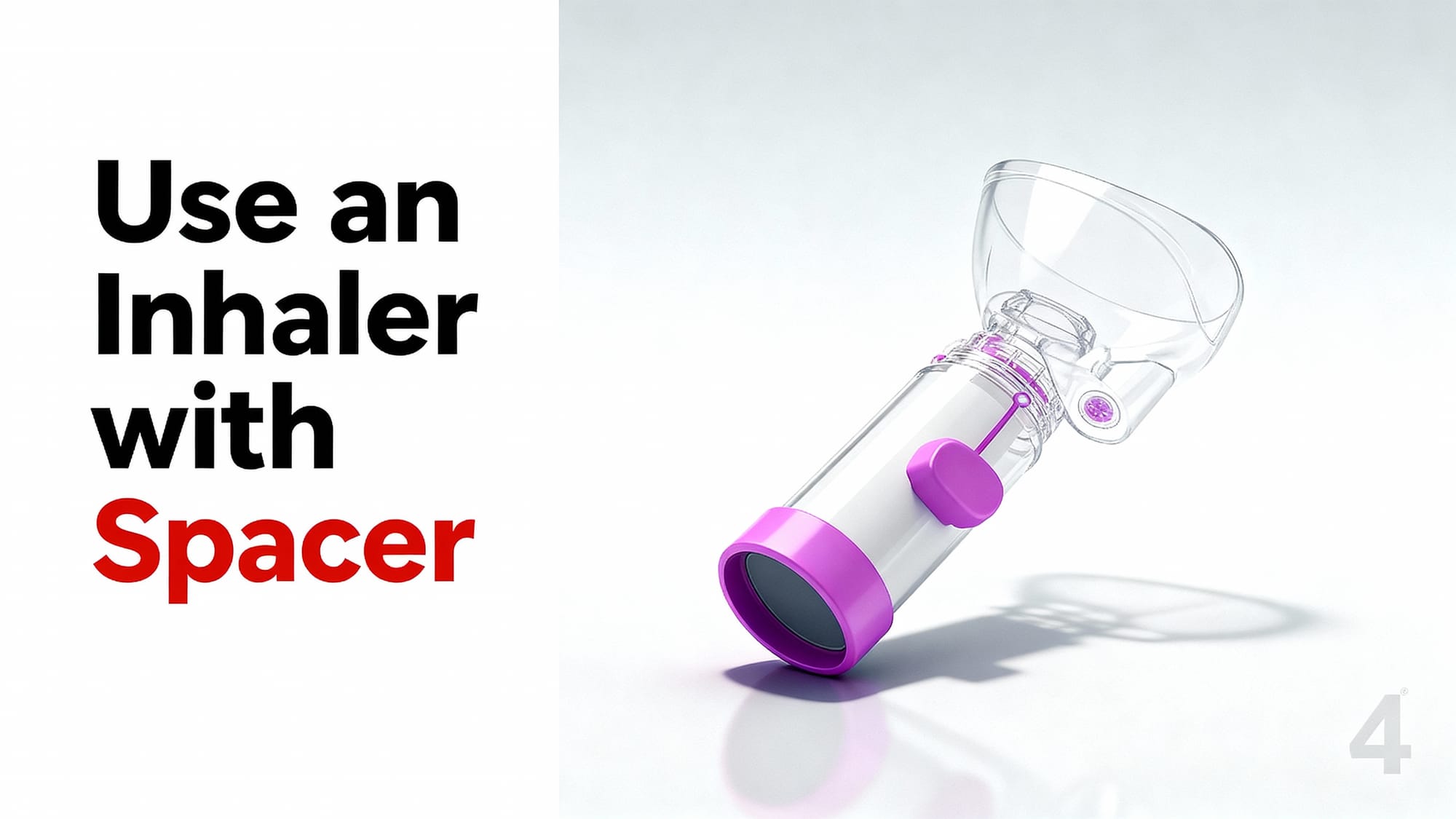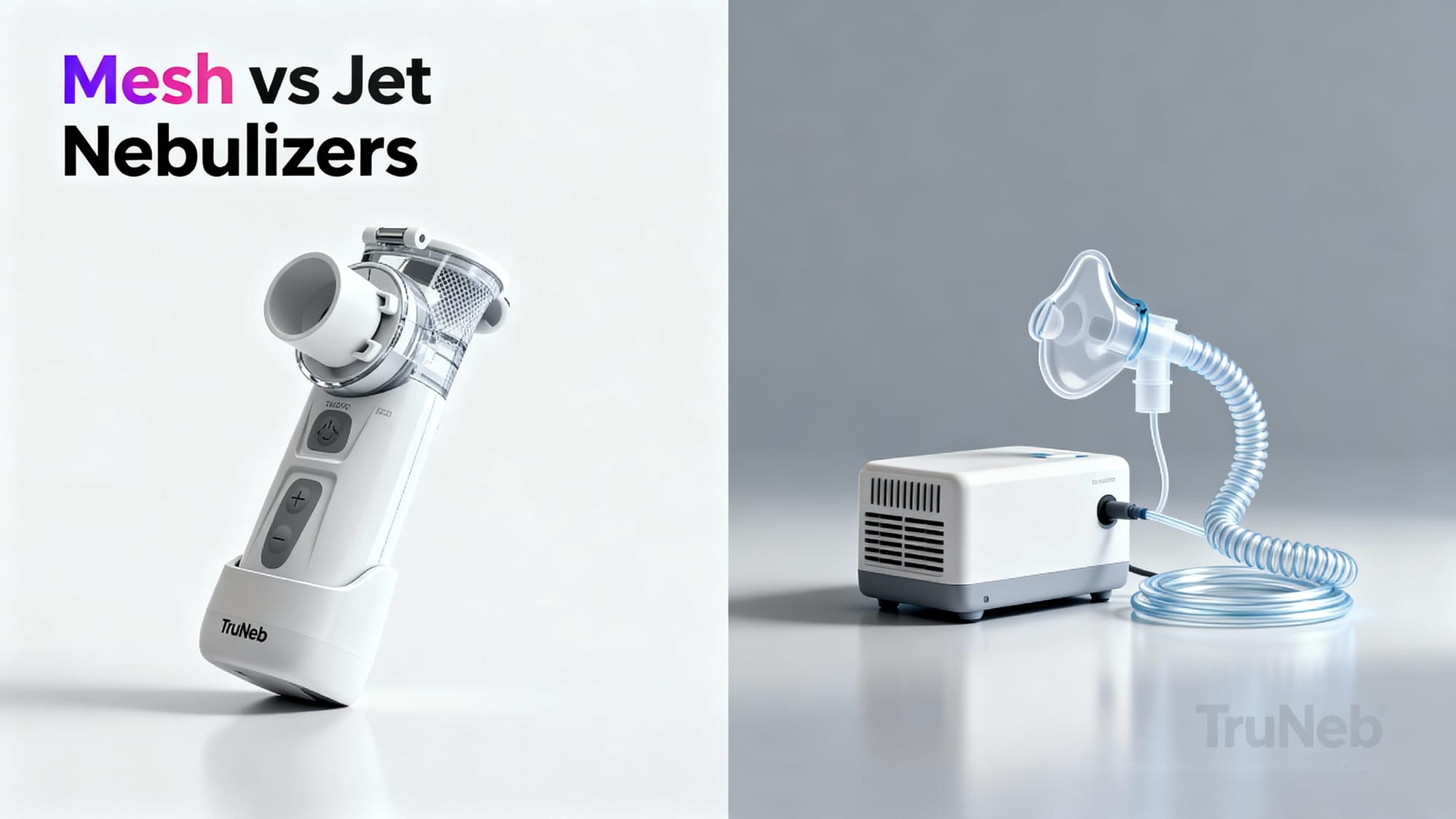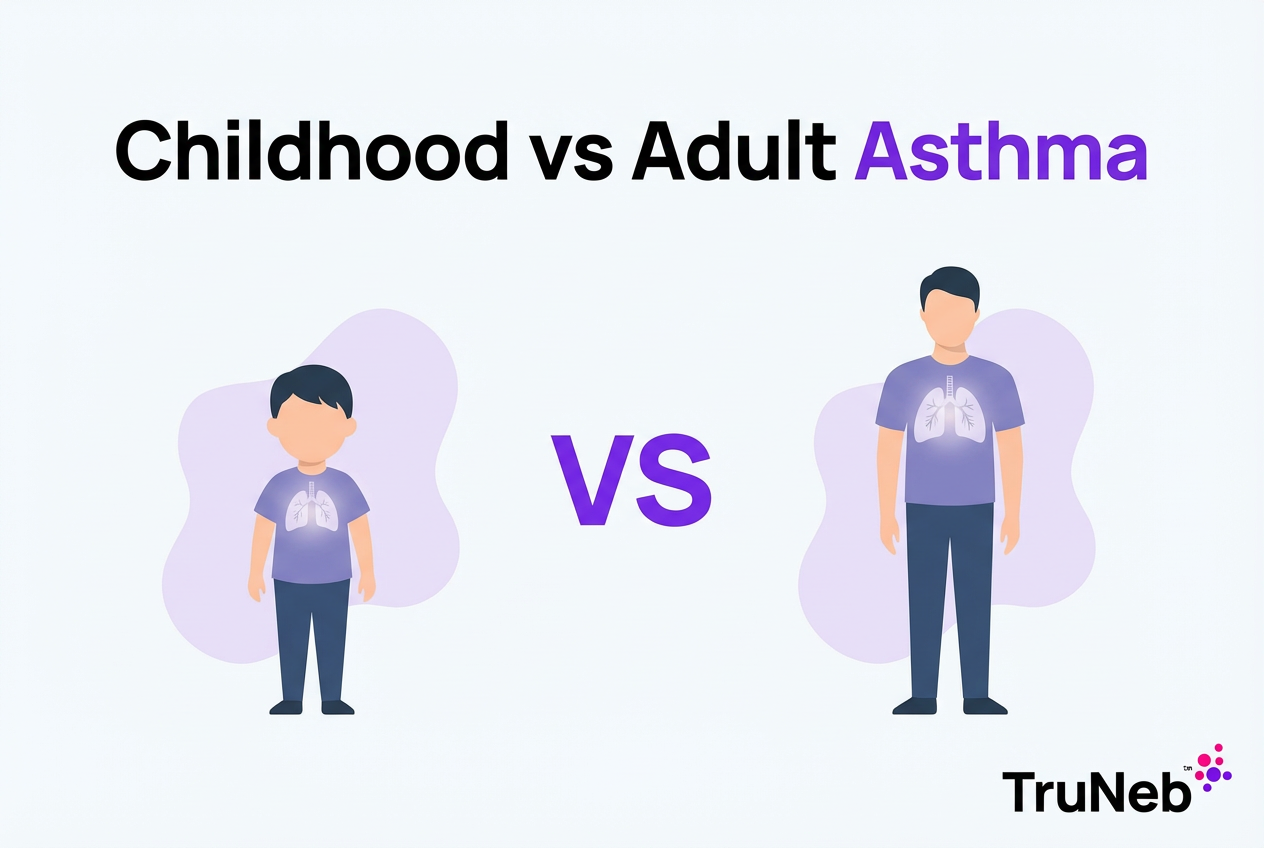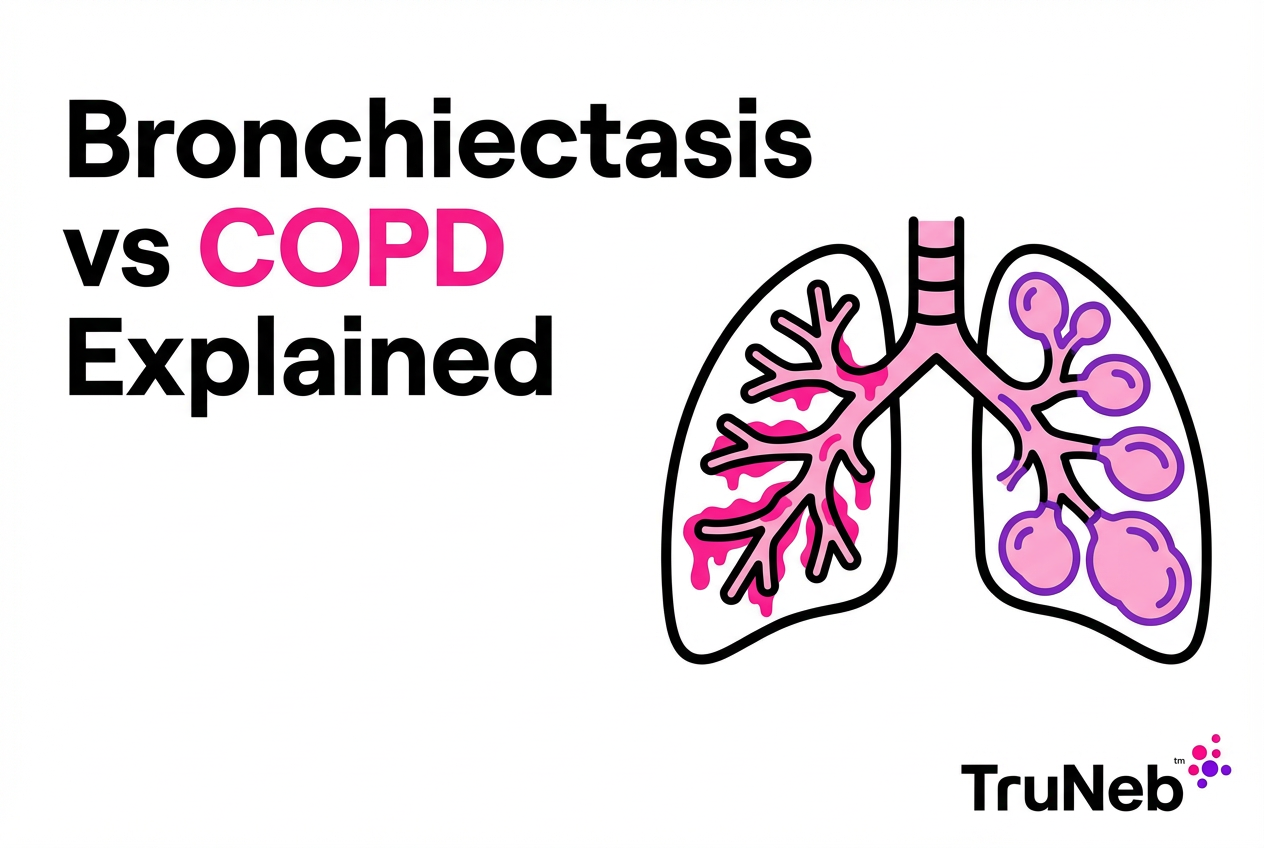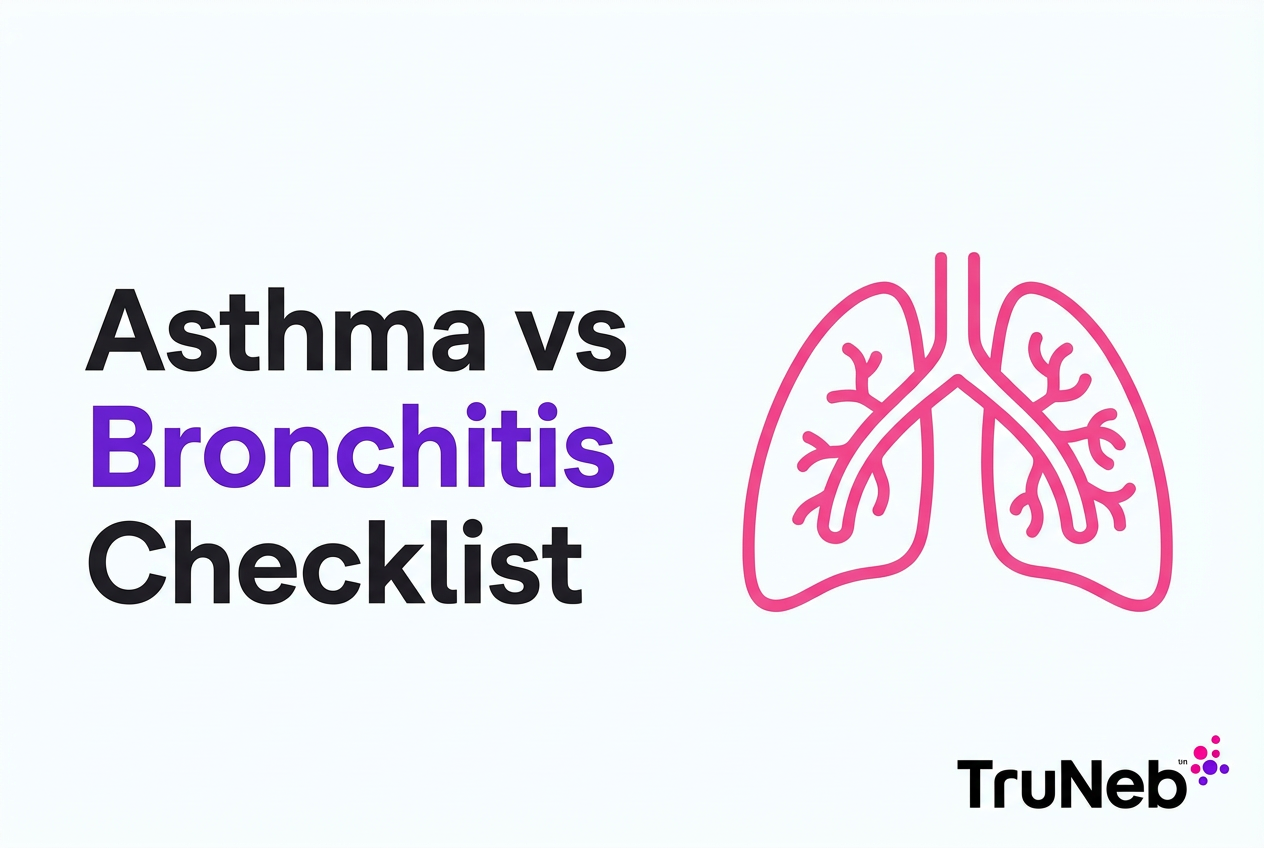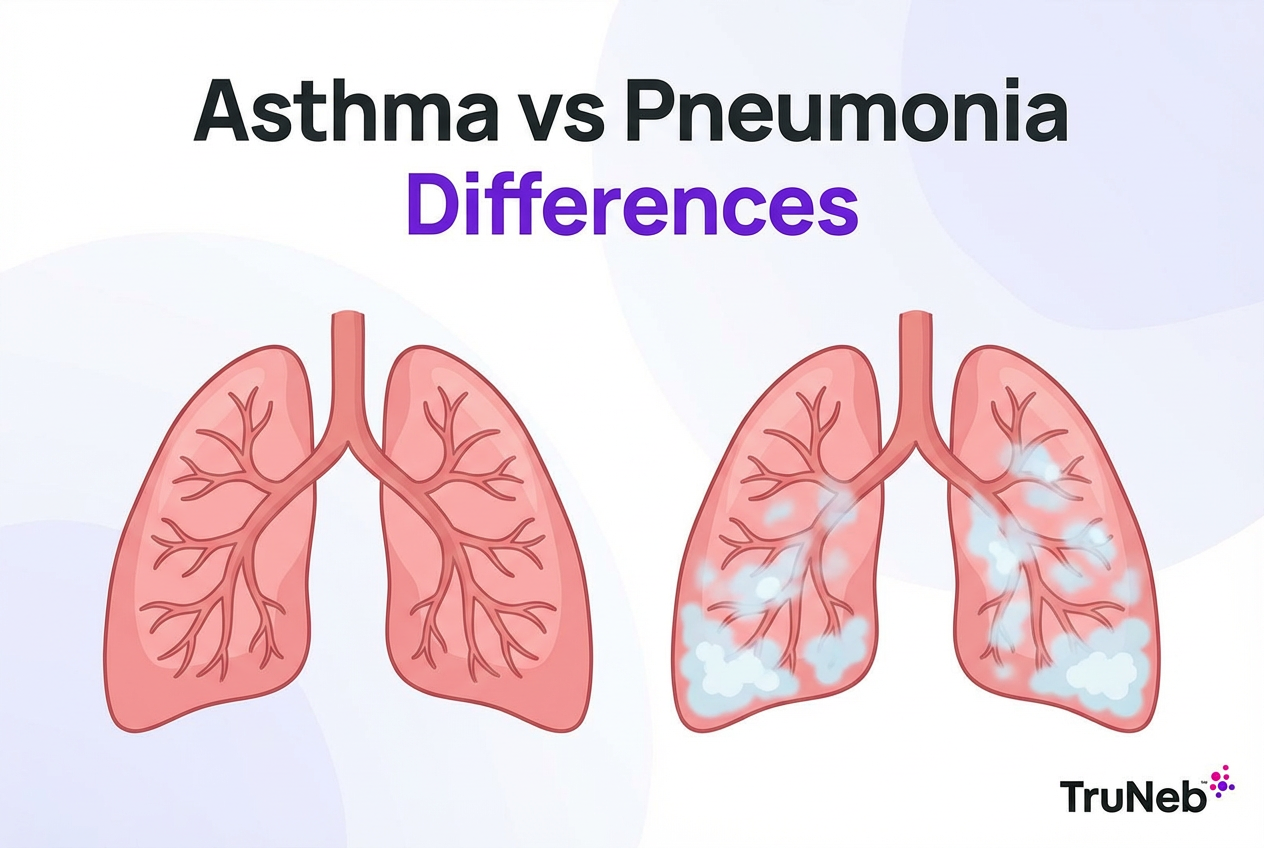On this page
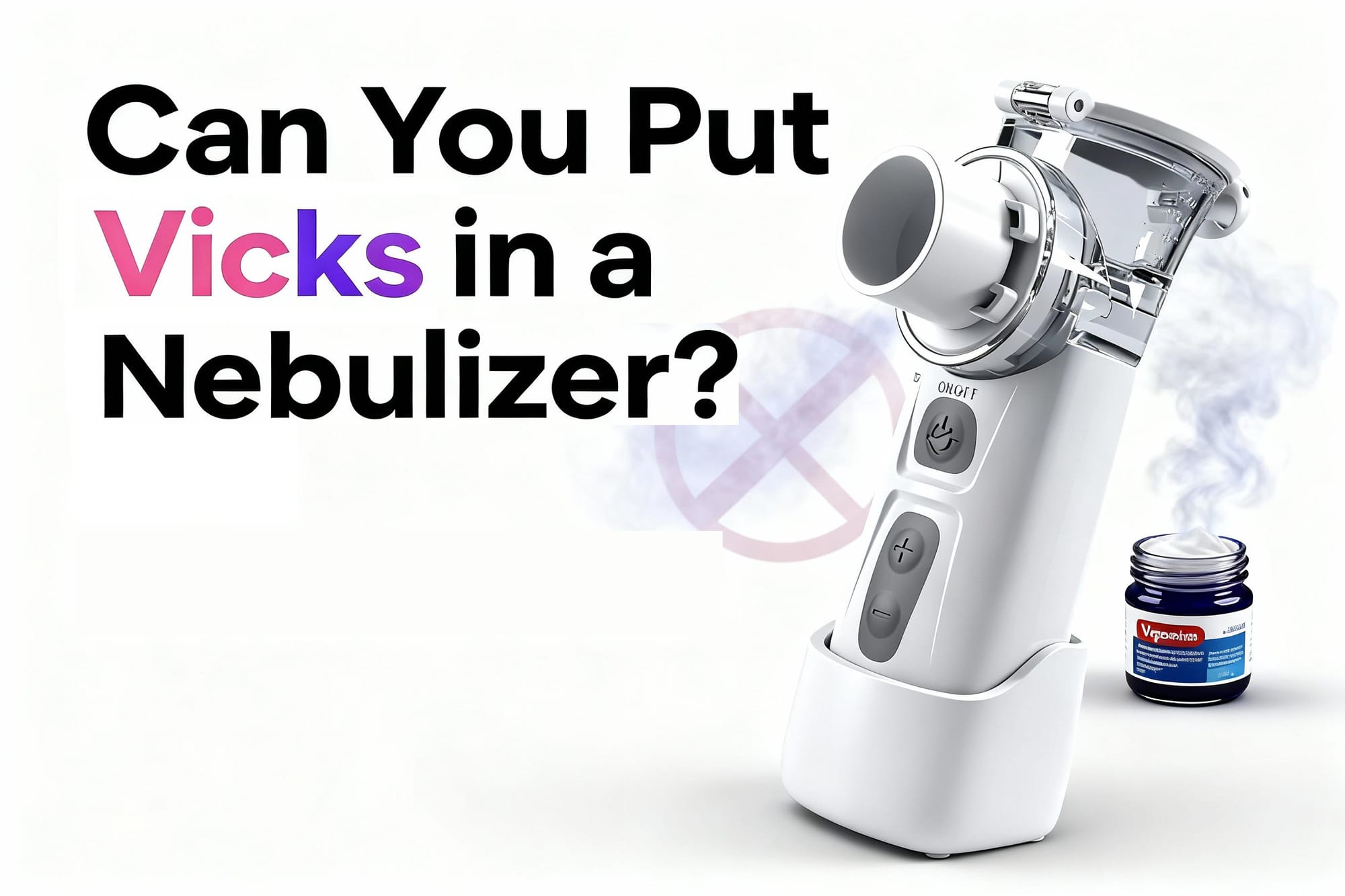
No—Here’s Why
No, you shouldn’t put Vicks VapoRub (or any similar ointment) in a nebulizer. Vicks is a topical chest rub with an oily base. Nebulizers are built to turn water-based medications into a fine mist for your lungs. Oily products can coat your airways, irritate them, and are linked to a type of lung inflammation called exogenous lipoid pneumonia. Thick ointments can also clog or damage the device.
Key rule of thumb: Only use sterile saline or prescription nebulizer solutions in your nebulizer—nothing oily, thick, or homemade.
Never put Vicks in a nebulizer; it’s a topical ointment with oils that can harm your lungs and damage the device.
Why Nebulizers Are for Medication Only
A nebulizer is a medical device that turns liquid medicine into a fine mist you breathe in. That mist carries tiny, water-based particles deep into your lungs. It’s designed for solutions like saline, bronchodilators, steroids, or other doctor-prescribed inhalation meds.
Oily or thick products don’t break into the right tiny droplets. They can stick to the machine’s parts or settle in your airways. It’s like using the wrong fuel—your device won’t work right and you could damage it.
Nebulizers are built for sterile, water‑based prescription solutions and saline—not thick or oily products.
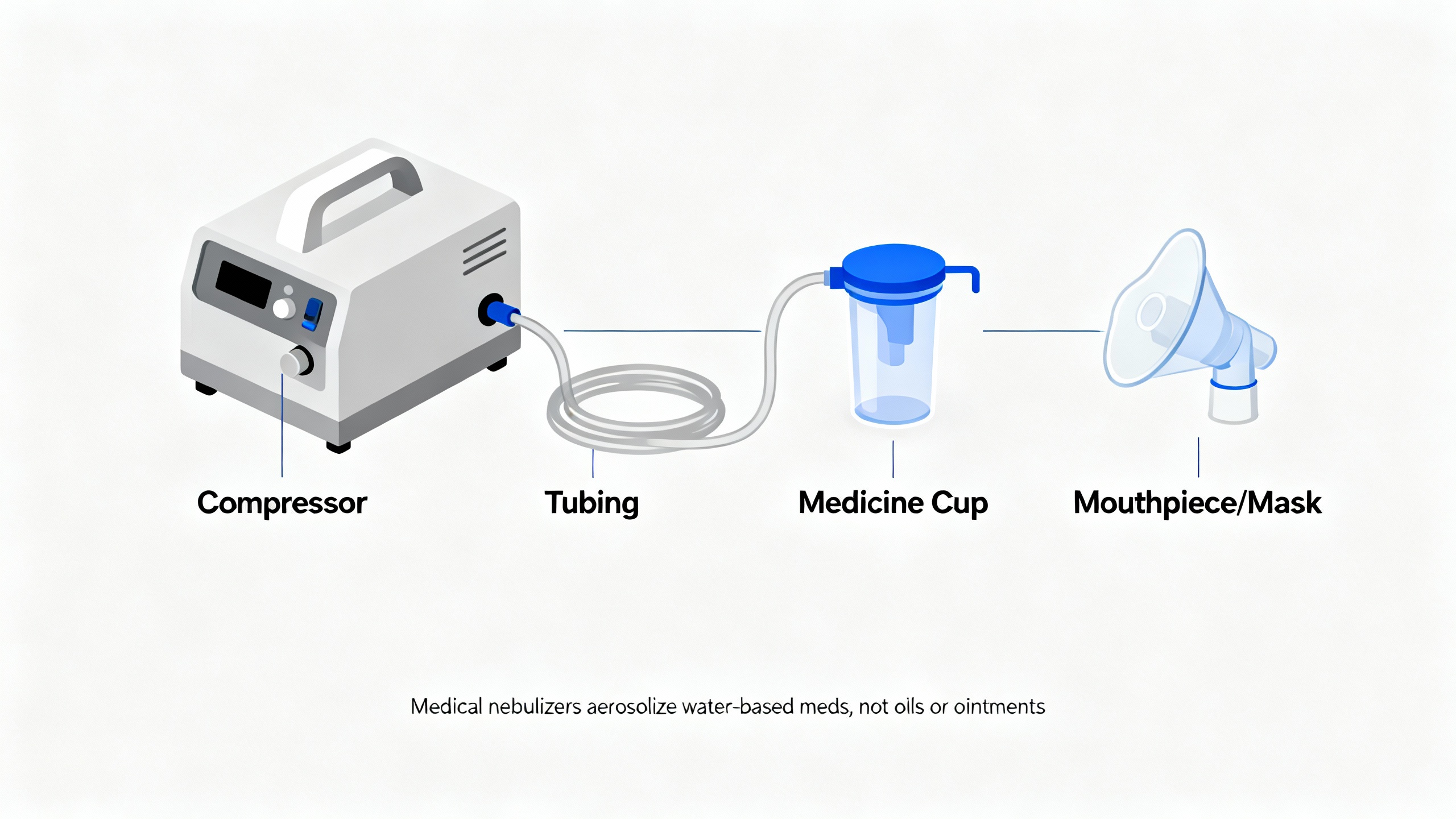
What Liquids Can You Use in a Nebulizer? (Approved Solutions)
- Sterile normal saline (0.9%): Moistens airways and can help loosen mucus.
- Bronchodilators: Albuterol or levalbuterol help open tight airways.
- Anticholinergics: Ipratropium helps relax airway muscles.
- Inhaled corticosteroids: Budesonide helps calm airway inflammation.
- Hypertonic saline (3%–7%): Used to help move mucus in certain conditions when prescribed.
- Specific antibiotic solutions: Used in select lung diseases under medical guidance.
These are all water-based and made for inhalation. If it isn’t a sterile saline or a doctor-prescribed inhalation solution, it doesn’t belong in your nebulizer.
| Substance | Safe in medical nebulizer? | Why/notes |
|---|---|---|
| Sterile normal saline (0.9%) | Yes | Water-based; adds moisture and can loosen mucus. |
| Bronchodilators (e.g., albuterol, levalbuterol) | Yes | Formulated for inhalation; opens tight airways. |
| Anticholinergics (e.g., ipratropium) | Yes | Formulated for inhalation; relaxes airway muscles. |
| Inhaled corticosteroids (e.g., budesonide) | Yes | Formulated for inhalation; reduces airway inflammation. |
| Hypertonic saline (3%–7%) | Only if prescribed1 | Used for specific conditions to help move mucus. |
| Antibiotic solutions (e.g., tobramycin, aztreonam) | Only if prescribed1 | For select infections under medical guidance. |
| Vicks VapoRub (ointment) | No | Petroleum-based; can irritate lungs and clog/damage device. |
| Essential oils (eucalyptus, peppermint, etc.) | No | Oil-based; lung irritant and linked to lipoid pneumonia. |
| Homemade mixes (tea, juice, vinegar, peroxide) | No | Not sterile or approved; can harm airways and device. |
1 Use only when specifically prescribed. Follow your clinician’s directions and your device manual.
Why You Should Never Nebulize Vicks (or Any Oils)
- Oil in the lungs: Vicks VapoRub has a petroleum base (petrolatum). Tiny oil droplets can settle in your lungs and trigger inflammation. This is linked to exogenous lipoid pneumonia.
- Airway irritation: Concentrated menthol and camphor vapors can sting and irritate sensitive airways, making coughing or wheezing worse—especially in young children.
- Device damage: Ointments and oils can clog jet or mesh parts, reduce mist output, and can damage the nebulizer.
- Safety risks around oxygen: Petroleum products are flammable. Using oily vapors near oxygen therapy can raise fire risk.
Bottom line: Using Vicks this way can hurt your lungs and your machine without giving the targeted medical relief a nebulizer is meant to deliver.
Nebulizing Vicks or oils can cause lipoid pneumonia, irritate your airways, and can clog or damage the machine.
Safety Note
For breathing treatments, keep your nebulizer for saline and prescription meds only. Talk to your doctor before trying a new medication.
A portable nebulizer like TruNeb™ can make on-the-go treatments easier. It’s designed for approved inhalation solutions, not oils or ointments.
⚠️ If you have severe symptoms like trouble breathing, bluish lips or face, chest pain, or confusion, call emergency services right away.
If your symptoms don’t improve or you’re considering changing your treatment, talk to your doctor.
Essential Oils and Other Home Remedies: Do They Belong in a Nebulizer?
No. Essential oils are oils. Like ointments, they can irritate airways and are linked to lipoid pneumonia when inhaled into the lungs. Aromatherapy diffusers (sometimes called "nebulizer diffusers") scent the room air. That is not the same as a medical nebulizer, which pushes mist deep into your lungs. Keep any oils out of medical nebulizers.
You might see boxes labeled "steam inhaler"—these are NOT medical nebulizers and aren’t for breathing medications.
If you want a menthol scent, use devices made for that (for example, some humidifiers use menthol pads). Always follow the device instructions.
Essential oils do not belong in a medical nebulizer—use diffusers or manufacturer‑approved devices instead.
Nebulizer vs. Vaporizer vs. Humidifier
- Nebulizer: Medical device for sterile saline and prescription inhalation meds that reach the lungs. Don’t add Vicks or oils.
- Steam vaporizer: Heats water to make steam for upper airway comfort. Some models are designed for specific inhalants (like VapoSteam). Use only as the manufacturer instructs.
- Cool-mist humidifier: Adds moisture to room air. Most do not allow liquids in the tank. Some accept menthol pads. Check your model’s manual.
Use the right tool for the job: medicines in a nebulizer, comfort vapors in devices made for them, and moisture from a humidifier.
Nebulizers deliver medicine to your lungs; vaporizers and humidifiers provide comfort moisture or scent—don’t cross‑use liquids.
Safer Ways to Relieve Cough and Congestion
- Nebulize sterile saline: Gentle moisture can help loosen mucus.
- Use Vicks VapoRub the labeled way: For adults and kids over 2, apply a small amount on chest and throat only. Don’t place under the nose.
- Warm steam (for adults/older kids): Inhale steam from a bowl of hot (not boiling) water. Keep eyes closed and avoid burns. Don’t do this with infants.
- Humidifier with menthol pads: Only if your device allows it. Follow the manual.
- Simple basics: Hydrate, use saline nasal drops, and sleep with your head raised. For children over 1, honey may soothe a cough.
- See your doctor: If wheezing, chest tightness, or symptoms persist, you might need prescription treatments.
Use saline in the nebulizer and follow labeled or device‑specific methods for menthol vapors; ask your doctor if you need medications.
Nebulizer Do’s and Don’ts
- DO use only saline or meds made for nebulizing.
- DO clean and air-dry parts after each use as the manual directs.
- DO supervise children during treatments.
- DON’T add ointments, essential oils, peroxide, vinegar, or DIY mixes.
- DON’T mix anything into a prescription vial unless your doctor says so.
- DON’T share mouthpieces without proper disinfection.
A portable nebulizer like TruNeb can make it easier to take prescribed treatments on the go.
Frequently Asked Questions
Tap or click a question below to see the answer:
No. Those products are for certain steam vaporizers or specified devices, not medical nebulizers.
No. Oils can irritate lungs and are linked to lipoid pneumonia. Keep oils out of medical nebulizers.
Use sterile normal saline instead. Plain or distilled water may irritate airways because it isn’t isotonic.
Sometimes saline helps with dryness or mucus. For medications, use only under medical guidance.
Stop, clean the parts per your manual, and watch for coughing, chest tightness, or breathing trouble. If symptoms appear, contact your doctor.
Nebulizers are engineered for specific, water-based medications. Other liquids can harm you or damage the device.
Key Takeaways
Never put Vicks—or any oily or homemade mixture—in a nebulizer. Nebulizers are for saline and prescribed inhalation meds only. For comfort vapors, use devices made for them and follow the instructions. If you’re unsure what’s safe to inhale, ask your doctor or pharmacist.
⚠️ If you have severe symptoms like trouble breathing, bluish lips or face, chest pain, or confusion, call emergency services right away.
If your symptoms don’t improve or you’re considering changing your treatment, talk to your doctor.
Disclaimer: This article is for informational purposes only and isn’t a substitute for professional medical advice. Always talk with your doctor about your symptoms, diagnosis, and treatments.

